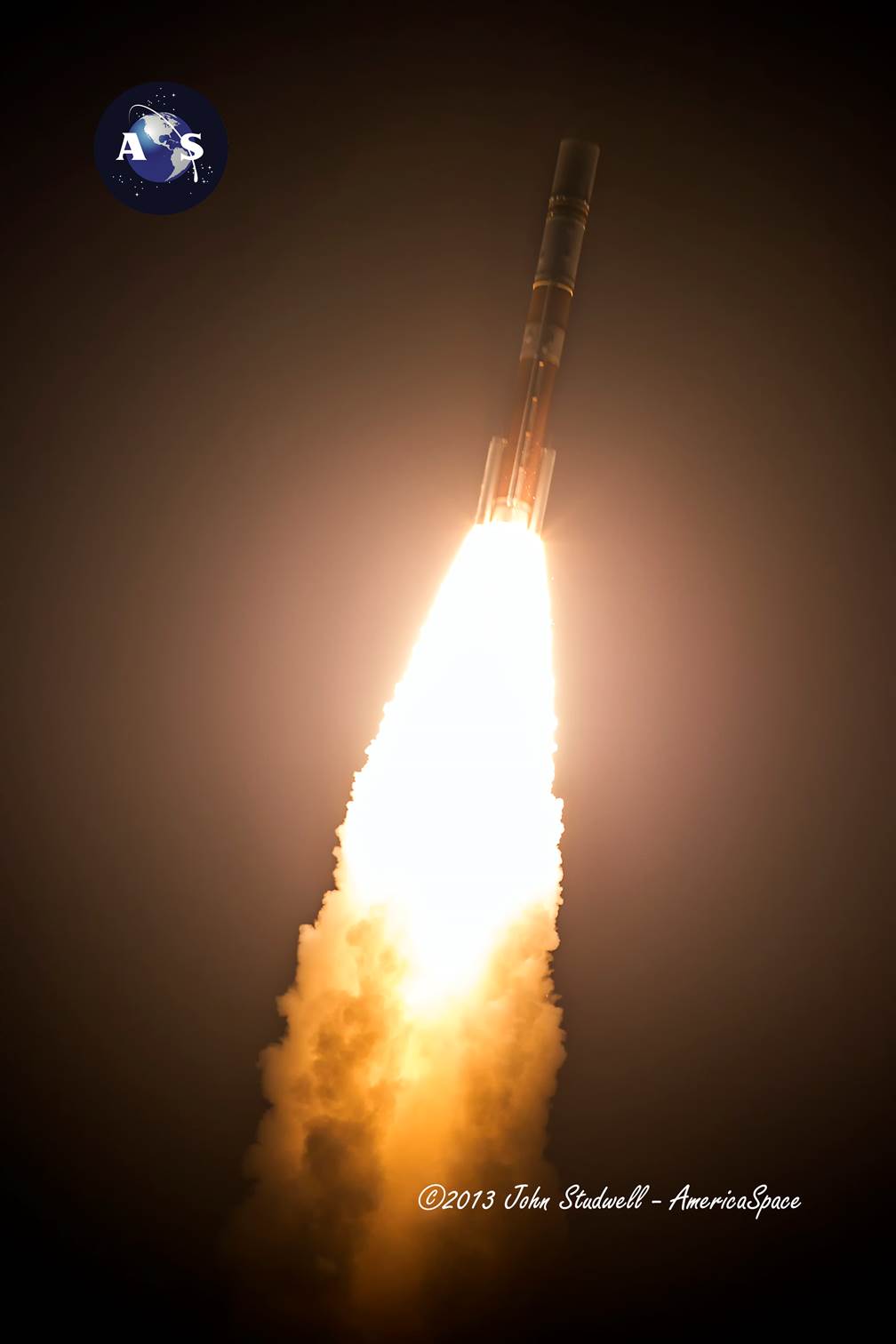
For the second time this year, a United Launch Alliance (ULA) Delta IV Medium+ rocket thundered perfectly into orbit tonight (Wednesday) to deliver a key communications satellite on behalf of the U.S. Air Force. Liftoff of the venerable rocket—which flew in its “5,4” configuration, with a 5-meter (16-foot) payload fairing, a modified second stage with 5-meter liquid hydrogen tank and “stretched” liquid oxygen tank, and four strap-on Graphite Epoxy Motors (GEM)-60—took place at 8:29 p.m. EDT, right on the opening of a 49-minute “window.” About 41 minutes later, the sixth Wideband Global Satcom (WGS-6) satellite was scheduled to separate from the Delta’s final stage to begin initial checkout in orbit.
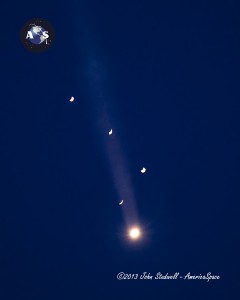
The mission, which took place from Space Launch Complex (SLC)-37 at Cape Canaveral Air Force Station, Fla., was an impressive sight to behold for the many spectators who turned up to watch it. As hoped, an 80-percent probability of acceptable weather paid off, and final preparations ran like clockwork. Processing of the Delta IV had been ongoing for several months, ever since the arrival of the rocket’s first stage in February 2013. Both its first and second stages were built by ULA at its Decatur, Ala., facility, after which they were delivered to the Cape aboard the M/C Delta Mariner cargo vessel to undergo final assembly in the seven-story Horizontal Integration Facility (HIF) at SLC-37.
Rollout to the pad took place Monday, 5 August, in a horizontal orientation, atop the diesel-powered Elevating Platform Transporter. Once the vehicle was “hard down” on the SLC-37 surface, a Fixed Pad Erector raised it to the vertical within the Mobile Service Tower (MST). A crane was then employed to install the four GEM-60 boosters, as well as the 13,200-pound WGS-6 satellite, encapsulated within a two-piece (“bisector”) payload fairing. Shortly before 10:30 a.m. EDT Wednesday, the rollback of the MST away from the vehicle got underway. Starting at around L-5 hours, the 4.5-hour process to load liquid hydrogen and oxygen aboard the Delta’s tanks began, concluding a little over 30 minutes ahead of launch. As the countdown emerged from its final built-in hold, the final polls of flight controllers produced a “Green” board and a unanimous “Go” for launch. At T-4 minutes, the Delta’s systems transferred to internal power, the ordnance was armed for launch, and the whole board continued to be “Green.”
Ignition of Pratt & Whitney Rocketdyne’s RS-68 first-stage engine took place at T-5 seconds, enabling the powerplant to ramp up to its full 663,000 pounds of thrust. After telemetry data confirmed that all engine-start parameters were satisfactory, the four GEM-60 motors roared to life at T-0.01 seconds and the vehicle was committed to flight and vacated SLC-37 at precisely T-zero.
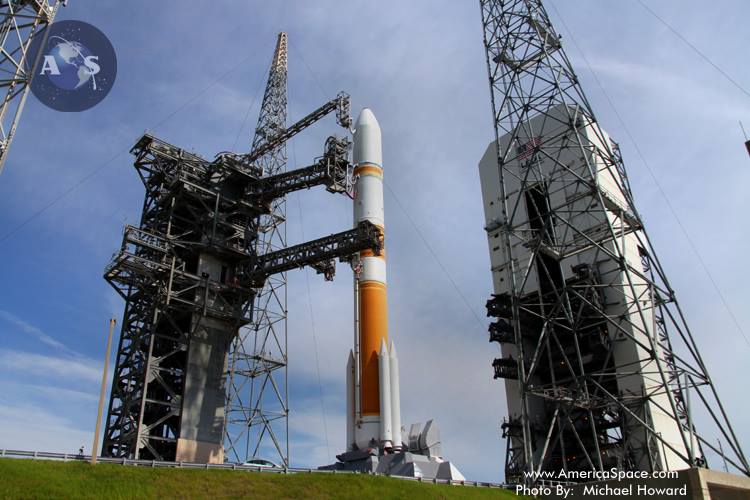
Shortly after clearing the launch tower, the Delta executed a computer-controlled pitch, yaw, and roll program maneuver, which actively guided it onto an easterly heading and established it onto the proper 100.97-degree azimuth to inject the WGS-6 payload into orbit. Less than 40 seconds into the ascent, lighting up the night sky for hundreds of miles, the rocket burst through the sound barrier. The GEM-60s exhausted their solid propellant and separated in pairs at T+100 seconds and T+102 seconds, after which the RS-68 continued to burn hot and hard for another two minutes. Separation of the payload fairing occurred at T+207 seconds—exposing WGS-6 to the space environment for the first time—and the RS-68 shut down at T+247 seconds.
A little more than seven seconds later, the Common Booster Core (CBC) of the first stage separated from the rapidly ascending vehicle and the second stage—powered by the Delta Cryogenic Second Stage (DCSS) and its single, hydrogen/oxygen-fueled RL-10B2 engine, capable of 24,750 pounds of thrust—ignited to continue the boost into orbit. This engine features an extendable carbon-carbon nozzle to enhance its specific impulse and conducted two critical “burns” to deliver WGS-6. The first burn began at T+268 seconds, about 13 seconds after the separation of the CBC. The engine fired for 16 minutes and established the satellite in its “parking” orbit, after which it coasted for eight minutes, preparatory to a second burn, which was scheduled to get underway at T+28 minutes as this article was completed. The second firing was much shorter (at about three minutes in duration), and WGS-6 was expected to separate from the DCSS at T+41 minutes.
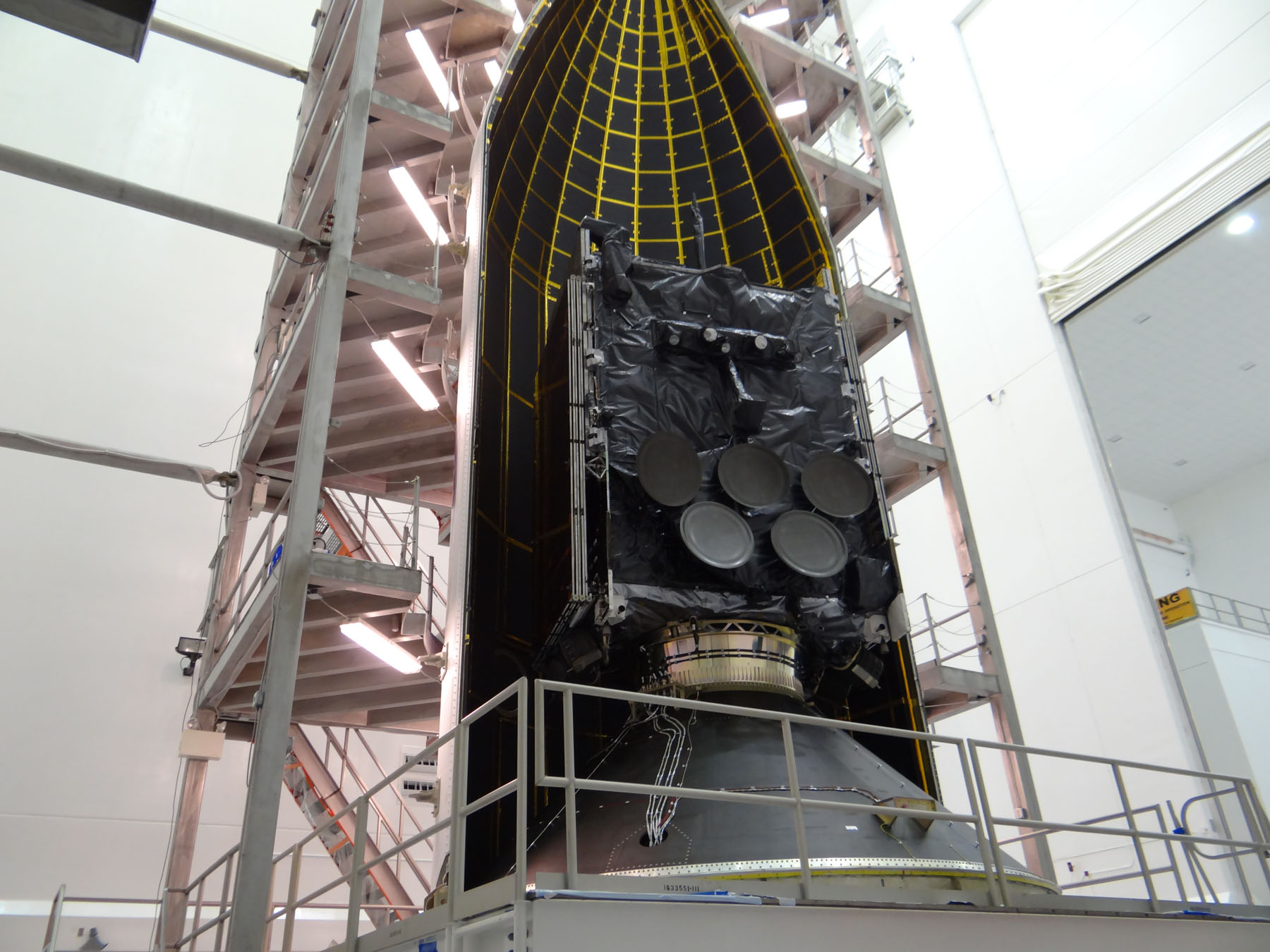
By this stage, the satellite would be in “supersynchronous transfer orbit,” with a perigee of 238.5 nautical miles and an apogee of 36,145.5 nautical miles, inclined 24 degrees to the equator. The heavyweight WGS-6 is the latest in a series of high-capacity communications satellites, operated by the U.S. Air Force Space Command’s Space and Missile Systems Center. It supports communications links in the 500 MHz range of the X-band and 1 GHz range of the Ka-band and has the capacity to filter and route up to 4.875 GHz of instantaneous bandwidth. The new satellite includes a high-bandwidth radio frequency bypass capability and can support data-transmission rates between 2.4 and 3.6 Gbps, some three times faster than previous Department of Defense systems.
“The demand for wideband satellite communications continues to increase,” said Craig Cooning, vice president and general manager of Boeing Space & Intelligence Systems. “WGS-6 and the additional WGS spacecraft yet to be launched will help to meet that need.”
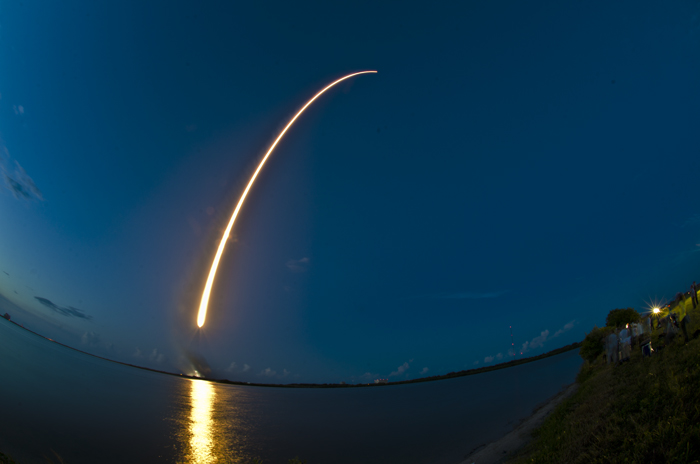
It is also equipped with a xenon-ion propulsion system, which offers a tenfold efficiency improvement over conventional bipropellants, and carries triple-junction gallium arsenide solar cells and deployable radiators with flexible heat pipes. A single WGS is believed to possess as much bandwidth as the entire Defense Satellite Communications System (DSCS) network currently in service. Following agreements signed in November 2007, the WGS system will be operated in partnership between the DoD and the Australian Defence Force. Canada is also a partner in the project.
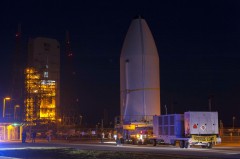
Three “Block 1” satellites—WGS-1, 2, and 3—were launched between October 2007 and December 2009, providing complete strategic coverage of the Pacific and Atlantic Oceans and supporting U.S. Central Command in Afghanistan, Iraq, and western Asia. The first member of the upgraded “Block 2” network, WGS-4, flew in January 2012, followed by WGS-5 in May 2013. The WGS-6 satellite was transported to Florida from Boeing’s production facility in El Segundo, Calif., on 17 May 2013, to undergo testing, fueling, and integration ahead of launch. Boeing is currently working on the development of WGS-7, having received a $182 million contract from the U.S. Air Force in August 2010 to build follow-on satellites.
Today’s mission marked the second Delta IV of 2013—following May’s launch of WGS-5—and was the 23rd flight of the vehicle since its maiden voyage in November 2002. When it was introduced, the RS-68 engine became the first large liquid-fueled powerplant to be developed by the United States since the Space Shuttle Main Engine, more than 25 years earlier. Although its first payload was the Eutelsat 70 telecommunications satellite, the Delta IV was originally conceived for U.S. military use, and low demand and high costs forced prime contractor Boeing to withdraw it from the commercial market in 2003. It has since lofted a mixture of military and NASA missions for communications, reconnaissance, early-warning, weather forecasting, and navigation.
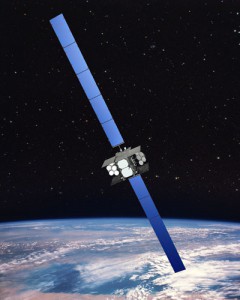
ULA did not fail to impress with tonight’s launch. Although the Delta IV (in its Medium+ “4,2” configuration) suffered a problematic flight last October, both it and ULA’s Atlas V have chalked up an impressive success record in over 10 years of operations. The Delta IV has now flown 23 times, only one of which—the maiden voyage of its “Heavy” configuration, back in December 2004—was classified as a partial failure, when a premature engine shutdown delivered its payloads into improper orbits. Most recently, last October’s Delta IV flight (though successful) experienced a leak in its upper stage engine, which produced lower than expected thrust. Fortunately, the rocket benefited from a large fuel load and fault-tolerant guidance software; this enabled it to recalculate its ascent trajectory and fire the engine for longer to achieve mission success.
The Delta IV was designed by Boeing, although the four GEM-60 high-performance solid-fueled boosters—each of which stand 53 feet tall—were developed by Alliant TechSystems. The boosters are so numbered because each casing measures 60 inches in diameter. The Delta IV Medium+ 5,4 has the potential to transport payloads weighing up to 14,475 pounds into a 22,000-mile geosynchronous orbit. Tonight’s launch was the fourth flight of the Medium+ 5,4 configuration.
“Congratulations to the entire team on today’s successful launch of the WGS-6 satellite. As with the previous five WGS missions, we have enjoyed a very strong partnership with the Air Force and all of our missions partners throughout this launch campaign,” said Jim Sponnick, ULA vice president, Atlas and Delta Programs. “We were honored to launch the first two WGS satellites on our Atlas V vehicle and the next four satellites in the constellation on our Delta IV vehicle, delivering critical communications capability to orbit to support our nation’s warfighters throughout the world.”
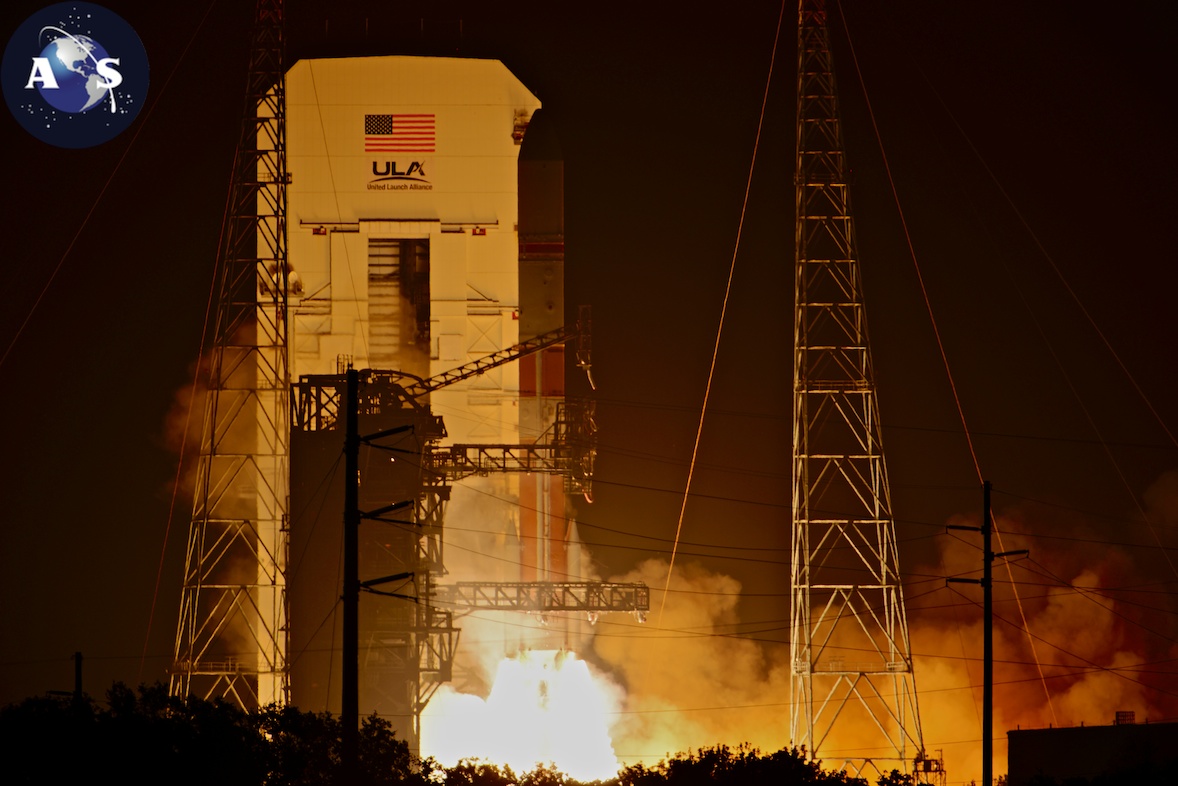
Want to keep up-to-date with all things space? Be sure to “Like” AmericaSpace on Facebook and follow us on Twitter:@AmericaSpace
Missions » WGS » Missions » WGS » WGS-5 » Missions » WGS » WGS 6 »



Saw Pratt-Whitney mentioned here. They have been around a long time. I used to order engine parts from them when I worked for the Air Force.